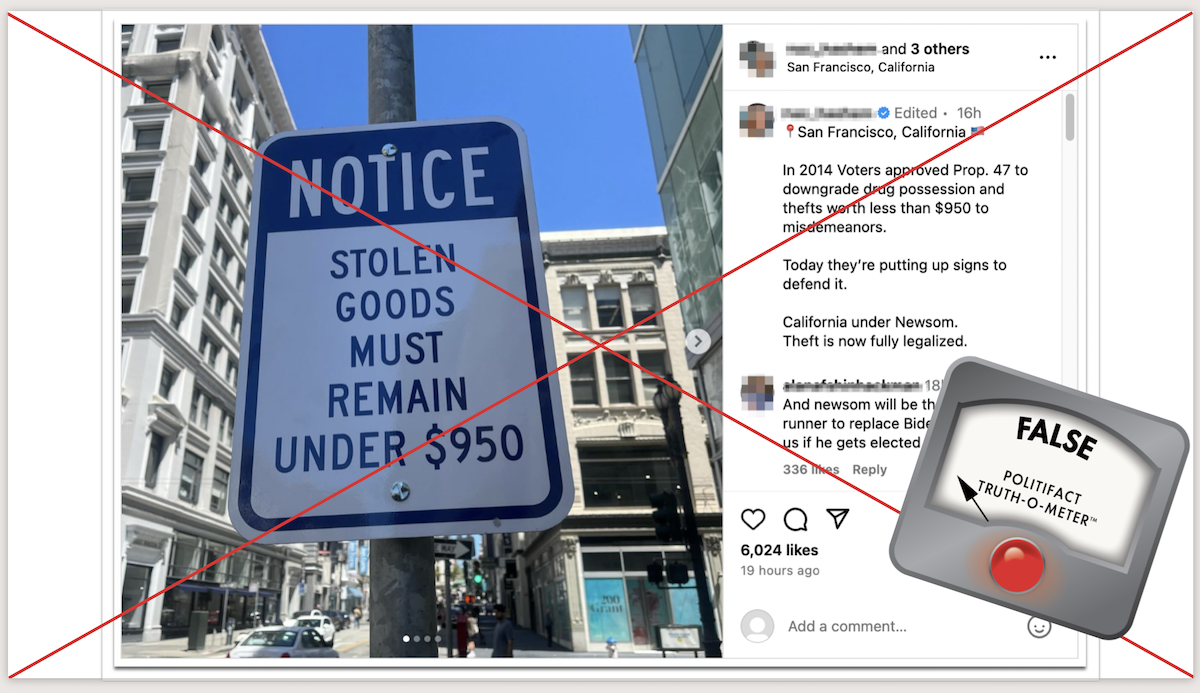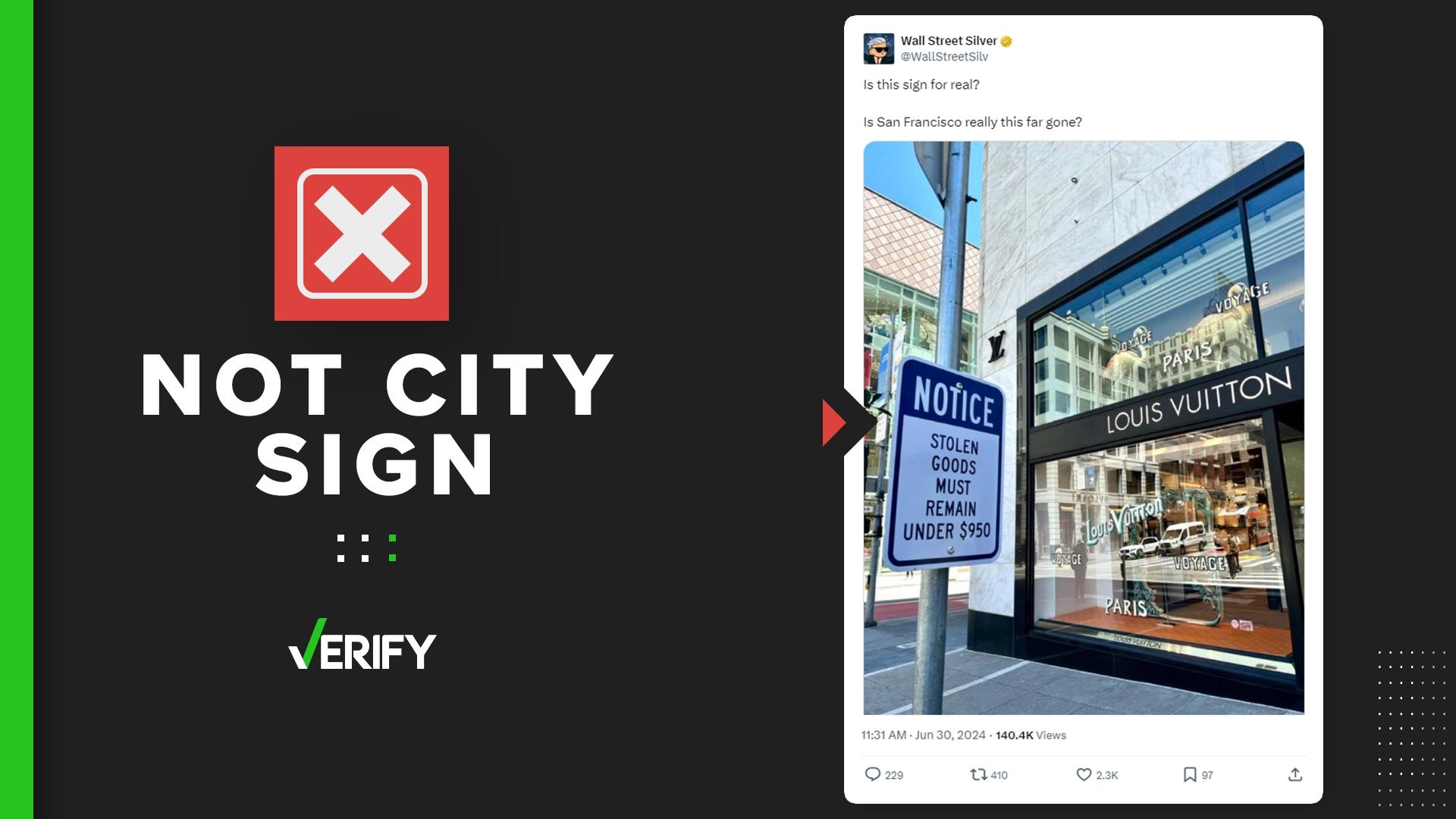San Francisco Theft Signs: What You Need To Know Now
Ever felt that unsettling feeling of being watched, the nagging suspicion that your belongings might not be safe? San Francisco, a city celebrated for its vibrant culture and iconic landmarks, has unfortunately also become synonymous with escalating theft rates. The proliferation of "theft signs" serves as a stark reminder of this reality, urging both residents and tourists to heighten their awareness and take proactive measures to protect themselves.
These ubiquitous signs are more than just statistical reflections of rising crime; they are a clarion call for heightened community vigilance. Positioned strategically, particularly in areas frequented by tourists, they aim to educate the public about the ever-present risks of theft. By understanding the purpose and implications of these warnings, individuals can significantly enhance their personal safety and safeguard their possessions. The key to navigating San Francisco's streets lies in recognizing that awareness is your first line of defense.
| Category | Information |
|---|---|
| Topic | Theft Signs in San Francisco |
| Geographic Focus | San Francisco, California |
| Relevance | Addresses rising theft rates and community awareness |
| Additional Notes | Focuses on preventive measures and resources for victims |
| Source | City of San Francisco Official Website |
This guide aims to provide an in-depth exploration of the history and evolution of "theft signs" in San Francisco, detailing the types of theft that are most prevalent, and providing actionable strategies to minimize the risk of becoming a victim. Furthermore, we'll incorporate insights from local law enforcement and crime prevention experts to reinforce the importance of proactive personal security measures. The goal is to empower you with the knowledge and tools necessary to navigate the city safely.
- Noodle Recall Alert What You Need To Know Safety Tips
- Colin Morgan The Untold Story Behind His Success Updated
1. History of Theft Signs in San Francisco
The genesis of theft signs in San Francisco traces back to the early 2000s, a period marked by a discernible surge in crime rates, particularly in areas popular with tourists. Recognizing the growing need to alert both residents and visitors to the potential dangers, city officials and law enforcement agencies strategically deployed "theft signs" in crime hotspots, intending them to serve as both a warning and a deterrent.
Initially, these signs were remarkably straightforward, conveying simple messages like "Beware of Theft" or "Keep Valuables Out of Sight." Over the years, however, the design and messaging have become increasingly sophisticated, incorporating statistics and actionable tips for preventing theft. This evolution reflects the city's continuous efforts to address the concerns of its citizens and enhance public safety. It highlights a commitment to adapting and refining strategies based on changing crime patterns and community needs.
Key Milestones in the Development of Theft Signs
- 2001: Introduction of initial theft warning signs in tourist-heavy districts, marking the beginning of the city's formal response.
- 2005: Expansion of theft signage to residential neighborhoods experiencing increased crime, indicating a widening scope of the problem.
- 2010: Collaboration with local businesses to promote theft awareness, signifying a unified front between public and private sectors.
- 2015: Implementation of digital signage providing real-time crime updates, reflecting the adoption of technology to enhance awareness.
2. Types of Theft Commonly Targeted
Understanding the types of theft that are most commonly targeted is crucial for individuals seeking to take appropriate precautions. In San Francisco, several distinct types of theft have been identified as particularly prevalent, each requiring a different approach to prevention. Being aware of these trends can empower you to better protect yourself and your belongings.
- Exploring Azriel Clary A Story Of Strength Thanks For Joining Us Here
- Exciting Telugu Movies On Movierulz In 2024 Your Ultimate Guide
2.1. Vehicle Break-ins
Vehicle break-ins consistently rank among the most frequently reported thefts in San Francisco. Thieves often target parked cars, particularly those where valuables are visible inside. The temptation of a visible laptop, phone, or even a shopping bag is often too much to resist. It is absolutely essential to keep windows rolled up, lock doors securely, and ensure that all items are completely out of sight. Consider investing in a car alarm or other security devices to further deter potential thieves.
2.2. Pickpocketing
Pickpocketing is another prevalent crime, particularly in crowded areas such as public transportation hubs and popular tourist attractions. Thieves often operate in teams, using distraction techniques to divert a victim's attention while another steals their belongings. Be exceptionally vigilant in crowded environments, keep your bags close to your body, and be wary of individuals who seem to be creating unnecessary distractions. Using a money belt or a concealed pouch can further minimize your risk.
2.3. Package Theft
With the explosive growth of online shopping, package theft has become an increasingly common problem. Thieves often follow delivery trucks, preying on packages left unattended on doorsteps. To mitigate this risk, consider having packages delivered to a secure location, such as a parcel locker or a trusted neighbor. Requesting signature confirmation for deliveries can also provide an added layer of security. Furthermore, installing a video doorbell can deter thieves and provide valuable evidence if a theft does occur. The increase in package theft demonstrates how criminal activity adapts to changing consumer habits, underscoring the need for constant vigilance and adaptation in security measures.
3. Significance of Theft Signs
Theft signs serve multiple crucial purposes in urban environments, particularly in a city like San Francisco where crime can be a significant concern. Their presence is not merely aesthetic; they are vital tools in raising awareness, deterring criminals, and educating the public.
- Awareness: Signs raise awareness about the potential for theft, prompting individuals to take precautions. They act as a constant reminder that theft is a reality and that vigilance is necessary.
- Deterrence: The presence of theft signs can deter potential thieves who may think twice before attempting a crime. The knowledge that an area is actively monitored and that potential victims are aware of the risks can discourage criminal activity.
- Education: Many signs provide valuable tips and resources for preventing theft, educating the public on best practices. They empower individuals to take proactive steps to protect themselves and their belongings. The educational aspect is crucial in fostering a culture of self-reliance and community responsibility.
4. Insights from Law Enforcement
Local law enforcement agencies have been proactively addressing theft-related concerns in San Francisco, recognizing the need for a multifaceted approach. Police departments often collaborate with community organizations to provide crime prevention workshops and distribute informational materials regarding theft prevention. This collaborative effort ensures that the message of safety reaches a wider audience and is tailored to the specific needs of different communities.
4.1. Crime Prevention Tips from Experts
- Always lock your vehicle and hide valuables. This simple act is one of the most effective ways to prevent vehicle break-ins.
- Be aware of your surroundings, especially in crowded places. This vigilance can help you identify potential threats and avoid becoming a victim of pickpocketing.
- Use anti-theft devices for bicycles and motorcycles. These devices can significantly deter thieves and make it more difficult for them to steal your vehicle.
- Report suspicious behavior to local authorities immediately. Your vigilance can help prevent crimes from occurring and assist law enforcement in apprehending criminals.
5. Preventive Measures Against Theft
Prevention is undeniably the most effective strategy when it comes to reducing the risk of theft. A proactive approach can significantly minimize your vulnerability and protect your belongings. By adopting these effective strategies, you can enhance your personal safety and navigate San Francisco's streets with greater confidence.
- Stay Vigilant: Always be aware of your surroundings and watch for suspicious activity. Trust your instincts and avoid areas that feel unsafe.
- Secure Personal Belongings: Use bags that close securely and keep them close to your body. Avoid displaying expensive jewelry or electronics, which can attract unwanted attention.
- Use Technology: Consider using tracking devices on valuable items, such as laptops or bicycles. These devices can help you recover stolen items and assist law enforcement in apprehending thieves.
- Join Community Groups: Engage with local community watch programs for additional support and information. These groups provide a valuable network of neighbors who are committed to preventing crime in their community.
6. The Role of Community Awareness
Community awareness plays a pivotal role in crime prevention. By fostering a culture of vigilance and mutual support among residents, neighborhoods can collectively work to reduce theft incidents. This collaborative approach strengthens the social fabric and creates a safer environment for everyone. When neighbors look out for one another, potential criminals are deterred, and the overall quality of life improves.
Community events, workshops, and forums can help educate residents about crime trends and preventive measures. These gatherings provide opportunities for residents to share information, learn from experts, and develop strategies to address local crime issues. They also foster a sense of community and encourage residents to take an active role in protecting their neighborhoods. A well-informed and engaged community is a powerful deterrent to crime.
7. Resources for Victims of Theft
If you unfortunately become a victim of theft, its absolutely crucial to know where to turn for help and support. San Francisco offers a range of resources to assist victims in recovering from the emotional and financial impact of theft. Knowing these resources are available can provide a sense of security and empower you to take the necessary steps to recover and rebuild.
- San Francisco Police Department: Report theft and obtain assistance. Filing a police report is essential for documenting the crime and initiating an investigation.
- Victim Services: Access support services for victims of crime, including counseling, advocacy, and financial assistance. These services can help you cope with the emotional trauma of theft and navigate the legal process.
- Local Nonprofits: Organizations that provide resources for crime prevention and victim assistance. These organizations offer a variety of services, including legal aid, housing assistance, and support groups.
- Urgent Which Ramen Is On Recall Safety Guide Amp Brand List
- Ramen Disease What You Need To Know Prevention Tips

PolitiFact San Francisco street signs warning of 950 retail theft

Stolen goods signs in San Francisco weren’t posted by city

San Francisco Theft Valery Nechay Law